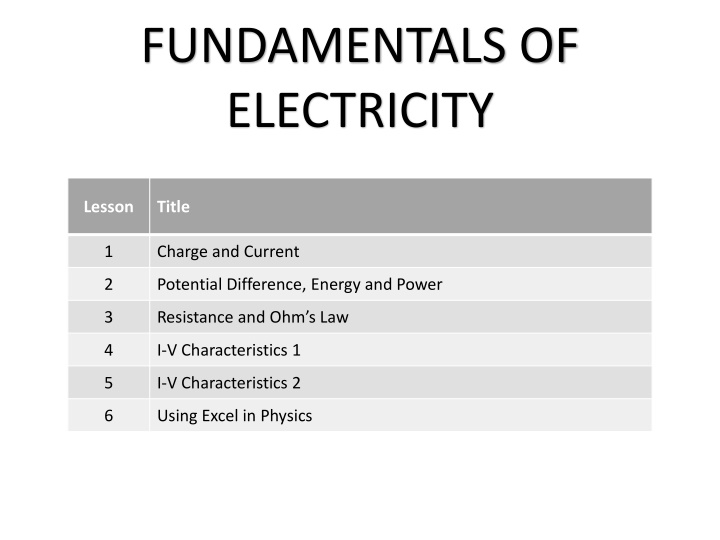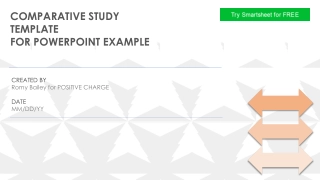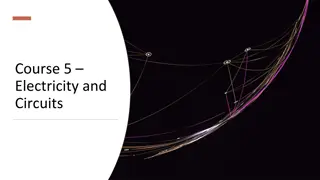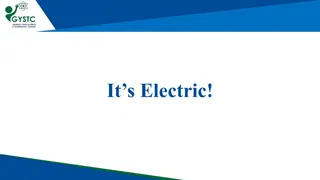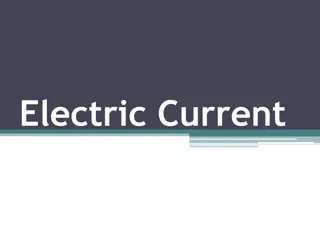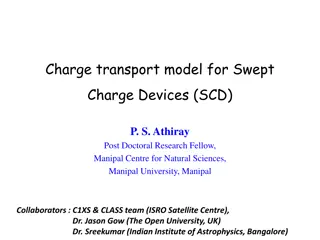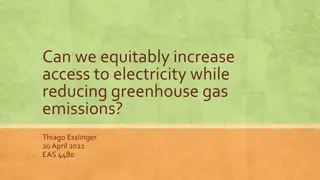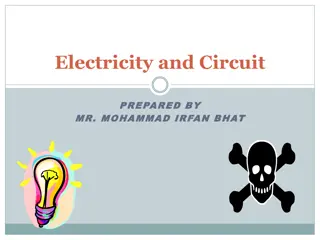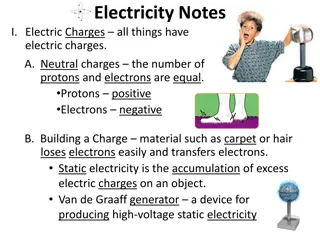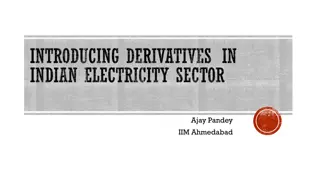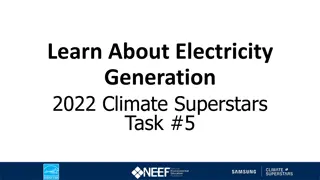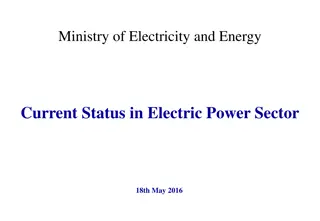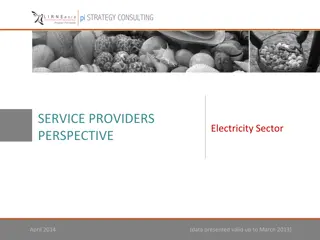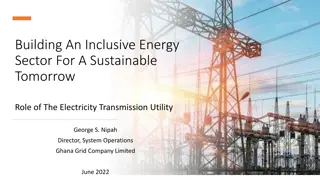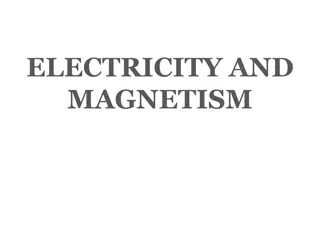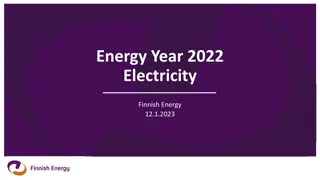Fundamentals of Electricity: Charge, Current, and Power
The essentials of electricity with topics like charge, current, potential difference, resistance, and power. Learn through worked examples and objectives to enhance your understanding.
Download Presentation

Please find below an Image/Link to download the presentation.
The content on the website is provided AS IS for your information and personal use only. It may not be sold, licensed, or shared on other websites without obtaining consent from the author.If you encounter any issues during the download, it is possible that the publisher has removed the file from their server.
You are allowed to download the files provided on this website for personal or commercial use, subject to the condition that they are used lawfully. All files are the property of their respective owners.
The content on the website is provided AS IS for your information and personal use only. It may not be sold, licensed, or shared on other websites without obtaining consent from the author.
E N D
Presentation Transcript
FUNDAMENTALS OF ELECTRICITY Lesson Title 1 Charge and Current 2 Potential Difference, Energy and Power 3 Resistance and Ohm s Law 4 I-V Characteristics 1 5 I-V Characteristics 2 6 Using Excel in Physics
Title: Charge and Current 1. A Kaon can be produced through the strong interaction. Why must the Kaons be produced in pairs? 2. A box of mass 750g lies stationary on a slope of incline 35o . What is the size of the frictional force on the mass directed up the slope? 3. Describe what is meant when two waves are coherent. 4. State one way to increase the maximum kinetic energy of electrons liberated through the photoelectric effect. 5. A calcium surface is hit by light emitted from a violet LED with wavelength 410nm. If the threshold frequency of calcium is 6.5 x 1014 Hz, what will be the maximum KE of the the emitted photoelectrons (in eV)?
Lesson Objectives Understand that electrical current is the rate of flow of charge; ? = ? ? and is measured in Amps. C-B Calculate the number of electrons that pass a point in a given time when provided with the current. A-A* A*+ Explain what is meant by the phrase charge is quantised
Worked Example 1. A current is flowing through a wire. A charge of 150 C passes a point on the wire in 30 s. Calculate the current flowing. 2. How many electrons are passing through a wire every second if the current is 1.00 mA?
Title: Potential Difference, Energy and Power 1. How many electrons pass point in a circuit in 1.0 minute if a current of 5.2 mA is flowing? 2. Sketch the 5th harmonic in an air column open at both ends. 3. What is the final speed of an electron that is accelerated through a potential difference of 2.6 kV? 4. A tennis ball is thrown in to the air and has an initial speed of 6.7 ms-1 when it leaves the hand. What height will the tennis ball reach? 5. What is the quark composition for an anti-proton?
Lesson Objectives Define potential difference as the work done per unit charge; ? =? ? C-B Define Power as the rate of work done and from this derive the equations for Power and Energy in Circuits. A-A* Define EMF and explain why it is both different and similar to Potential Difference A*+
Worked Example 1. An alarm clock has a current of 18A through it when the p.d. across the clock is 5.6V. What is the power rating of the alarm clock? 2. An appliance has 2kJ of energy transferred to it per second. If the resistance of the appliance is 120 , what value of current must be flowing in the appliance when it is switched on? 3. How much energy must be provided to a circuit to produce a potential difference of 12 V when a current of 4.3 A if the circuit is running for 8 minutes?
Title: Resistance and Ohms Law 1. 8.5 x 1035 electrons pass a point in a circuit in 5 seconds. If the potential difference across the circuit is 12V, how much power does the circuit provide? 2. Define the Amp. 3. Sketch the circuit symbols for a battery, a variable resistor and a diode. 4. Is the below interaction possible? ?0+ ? ?0+ 0 5. The ground state, first and second energy levels of a hydrogen atom have values of - 13.6eV, -3.41eV and -1.51eV respectively. What is the minimum wavelength of photon that could be emitted during a deexcitation between these energy levels?
Lesson Objectives Define Resistance using the equation: C-B ? = ?? Describe the set up required to determine the Resistance of a component and link possible results to Ohm s Law. A-A* Explain the importance of the resistances allocated to Ammeters and Voltmeters in a circuit. A*+
Title: I-V Characteristics 1 1. 85 C of charge passes through a circuit in 1.0 minute. If the battery is providing a potential difference of 12V to the circuit, what must the resistance of the circuit be? 2. What frequency of photon is required to produce an electron-positron pair by pair production? 3. How much energy is transferred per second to a circuit of resistance 3.2 k when the current in the circuit is 8.7 mA? 4. An object accelerates from rest to 65m/s in 2 minutes. What distance will the object travel in this time? 5. Light of wavelength 510nm is passed through a diffraction grating with 300 slits per mm. What is the largest order maxima that will be seen in the diffraction pattern?
Lesson Objectives I can sketch the correct shape of I-V Curve for a resistor, a wire, a filament lamp and a diode. C-B I can identify from an I-V curve how the resistance of a component changes with p.d. and (in the case of a filament lamp) link this to real world observations. A-A* Explain the shape of a diode graph and identify ohmic and no-ohmic components. A*+
Title: I-V Characteristics 2/Using Excel in Physics 1. Sketch the IV curve for a Filament Lightbulb. 2. An optical fibre is surrounded by cladding of refractive index 1.47. Calculate the critical angle at the core-cladding boundary. (refractive index or the optical fibre glass = 1.57). 3. What feature of a velocity-time graph would I use to determine the distance travelled by an object? 4. The ground state of a hydrogen atom is at -13.6eV. An electron collides with the atom causing it to ionise. What is the minimum velocity the electron must have for this to occur? 5. Calculate the number of electrons passing a point in a wire per second if the current is 6.7 A.
Lesson Objectives I can use basic formula in Excel to complete and analyse tables of data. C-B I can plot collected data on to graphs on excel and format those graphs to meet the requirements of an A-Level CPAC practical. A-A* I can explain the shapes of the I-V Curves for Wire, resistor, diode and filament lamp and describe where errors could arise when collecting data on these components. A*+
Title: Using Excel in Physics 1. Write a function that would find the average of the values highlighted in yellow. 2. A battery has an emf of 12V and negligible internal resistance. It is capable of delivering a total charge of 1640C. Calculate: a) the maximum energy the battery could deliver b) the power it would deliver to the components of a circuit if the current through it was 0.8A c) how long the battery would last for, if it were to supply power at the rate calculated in b). 3. Sketch the Feynman diagram (including quarks) for Beta+ decay.
Lesson Objectives I can use basic formula in Excel to complete and analyse tables of data. C-B I can plot collected data on to graphs on excel and format those graphs to meet the requirements of an A-Level CPAC practical. A-A* I can explain the shapes of the I-V Curves for Wire, resistor, diode and filament lamp and describe where errors could arise when collecting data on these components. A*+
